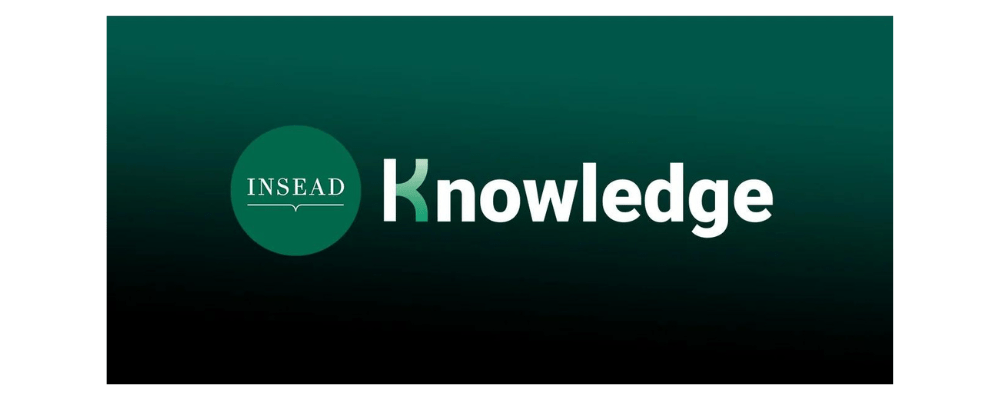When Amazon went public in 1997, founder and then CEO Jeff Bezos’ message to shareholders was clear: His focus was on creating long-term value through bold operational investment. The following year, as promised, Amazon doubled its distribution capacity and more than tripled its inventory.
And the rest, as we know it, is history. However, not many companies managed to follow in the footsteps of the tech giant, which by today, has a market capitalisation of over US$ 1.9 trillion. The reason: It is hard to escape the entrapment of “short-term Wall Street reactions” as Bezos called it, or simply, the need to create value in the short term.
Escaping managerial short-termism
Executives are constantly faced with shareholder pressure to meet short-term performance targets such as earnings-per-share (EPS). When the focus is to make the company’s financial performance look good in annual and quarterly reports, executives inevitably put off long-term investments that may seem prohibitively risky.
Managerial short-termism can affect operational decisions. In particular, it may lead to underinvestment in operational capabilities. Indeed, the odds are stacked against building operational capacity, since it involves significant financial resources, demand-side risks and a long lead time before seeing results. Moreover, since operational decisions regarding capacity tend to be perceived as optimisation problems rather than strategic considerations, the negative impact of short-termism on operational capability and inventory hardly gets the attention it deserves.
Interestingly, a reform has been unfolding in the United States since 1984. Corporate constituency statutes are explicitly allowing corporate office holders and directors to consider the long-term interests of the corporation and the interests of corporate stakeholders, as well as how they are aligned in carrying out their fiduciary duties.
Effectively, the statutes give executives and directors significant flexibility to make decisions in the long-term interest of their company and its expanded range of stakeholders. In other words, it frees them from short-termism.
Why long-term matters
From an operations perspective, we are interested in the effect of a long-term view vs. short-term view on capacity investment and its eventual impact on company performance. The staggered adoption of constituency statutes allowed us to study the effect and extent of managerial short-termism on the operational capabilities of companies.
We analysed company data across 35 states including Texas, New York, Florida, Illinois and Pennsylvania from 1984 to 2007. We found that after the reforms, companies incorporated in constituency statute states increased capacity investment by 15.4 percent and inventory by 5.2 percent more than those not incorporated in constituency statute states.
These increases are gradual and persistent over time, suggesting a transformation in operational structure and strategy. In addition, we found that companies with a higher level of managerial short-termism, such as those with low institutional ownership, saw bigger increases in operational investment and performance. This confirms the operational benefits of long-termism.
Notably, while constituency statutes were intended to offer managerial flexibility and provide legal protection to executives who adopt a long-term approach, our empirical findings suggest that alleviating short-term stock market pressures not only benefited executives, but also potentially shareholders in the long-term. Our analysis shows that companies that are more likely to benefit from higher flexibility performed better.
Planning long-term builds agility and resilience
While investing in operational capabilities is crucial for long-term success, it is easy to forgo projects with big price tags when faced with short-term market pressures, which tend to intensify during crises such as global pandemics and conflicts.
Indeed, when demand for products such as medicines surge during crises (e.g. disasters or pandemics), producers that fail to build operational capacity face considerable supply-side risks due to the lack of operational flexibility. Limited inventory due to underinvestment makes it challenging to meet demand, which ultimately hurt the company’s bottom line.
More recently, Boeing’s decline is a cautionary tale of underinvestment in operational capabilities. When Covid-19 hit, Boeing reacted to short-term cost-cutting pressures by laying off experienced mechanics with irreplaceable knowledge of building and maintaining airplanes. However, when business rebounded post-pandemic, the aviation giant’s declining operational capabilities resulted in a series of incidents that compromised passenger safety, hurt its reputation and sent its stock price tumbling. Its focus on cost-efficiency in the short run turned out to be far more costly in the long run.
Executives need to be deliberate in incorporating long-term operational decisions in their corporate agendas. Regulations can alleviate short-term pressure from capital markets to a certain extent. This can increase managerial long-termism and influence how shareholders view investment time horizon. Following the statutes in the US, the principle of enlightened shareholder value was also introduced in the UK through the Companies Act 2006. That said, companies can do their part by getting the buy-in of shareholders to focus on the longer-term.
It’s all about communication
There is no persuasion without communication. In Jeff Bezos’ first annual shareholder letter in 1997, he urged shareholders to look past the short-term and support Amazon’s goal of maximising the present value of future cash flows and long-term firm value. In his words: “Our goal remains to continue to solidify and extend our brand and customer base. This requires sustained investment in systems and infrastructure to support outstanding customer convenience, selection, and service while we grow.”
In addition to letters to shareholders, shareholder meetings and investor calls are opportunities for executives to present and explain operational investment plans. For example, at an annual meeting of shareholders, Walmart CEO Doug McMillon shared plans to invest in omni-channel capabilities and explained how a seamless shopping experience across in-store, online and mobile devices would create long-term shareholder value. In the words of Walmart’s former CFO Brett Biggs, “Being transparent allows [McMillon] to say to investors, ‘Here is something we plan to do for a period. You might not like the short-term impact, but here’s why you’ll be happy at the other end’.”
In addition, press releases, websites and social media are useful channels to shape retail investors’ attitudes towards operational investments that could create value in the long run. At the same time, what’s unsaid can be as powerful as the spoken word. In 2009, Unilever’s CEO Paul Polman announced that the company would no longer provide earnings guidance and instead, be more longer-term oriented. Companies including Coca-Cola, General Electric and Pfizer have similarly removed quarterly earnings guidance to signal their focus on long-term value creation.
For private companies that are not yet affected by stakeholder pressures on operations and performance, an important consideration is whether and when to go public, and if so, what and how to communicate.
Revisiting performance metrics and incentives
Like in other enlightened organisations, “long-term value creation” was repeatedly mentioned in Walt Disney’s letters to shareholders in 2022. But the media and entertainment conglomerate went one step further: It removed adjusted EPS as a measure of executives’ performance. By rethinking incentives, Disney tackled the motivational challenges of creating long-term shareholder value. Restructuring executive performance metrics has allowed companies to broaden their definition of success and incorporate environment, social and governance (ESG) goals in executive pay.
Corporate boards can take the lead in this direction when appointing high-level executives. In addition to putting in place incentive plans that reward longer-term performance, explicitly acknowledging the risks of long-term operational investment can give executives the confidence to invest in operational capacity that could generate value in the long run.
After all, one ingredient to long-term success is commitment to operational investments, which may involve building operational capacity or more holistically, incorporating sustainability and circularity considerations into operations to meet long-term ESG goals. Importantly, this commitment must go hand in hand with open, timely communication to the relevant stakeholders, especially in turbulent times.
“INSEAD, a contraction of “Institut Européen d’Administration des Affaires” is a non-profit graduate-only business school that maintains campuses in Europe, Asia, the Middle East, and North America.”
Please visit the firm link to site






